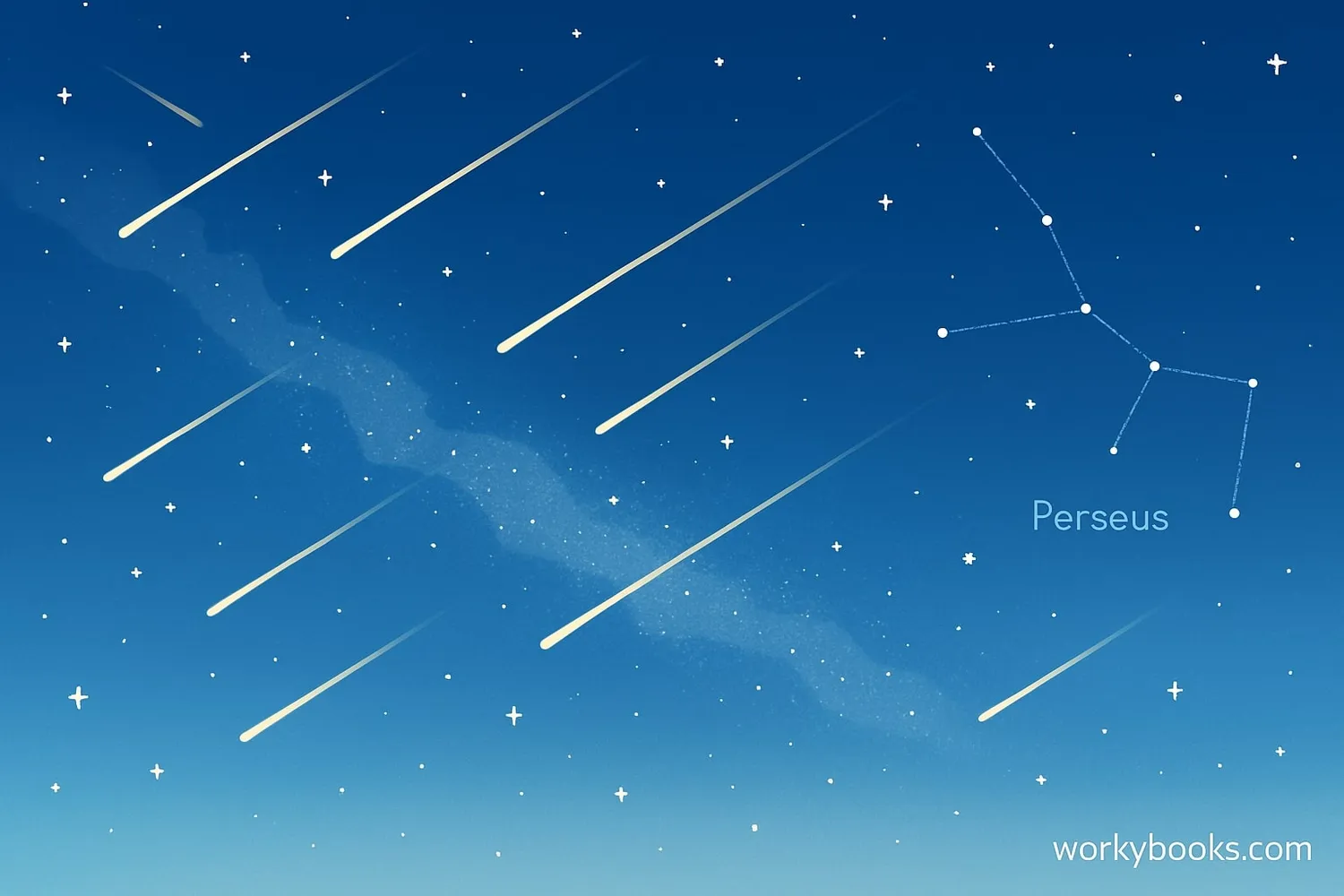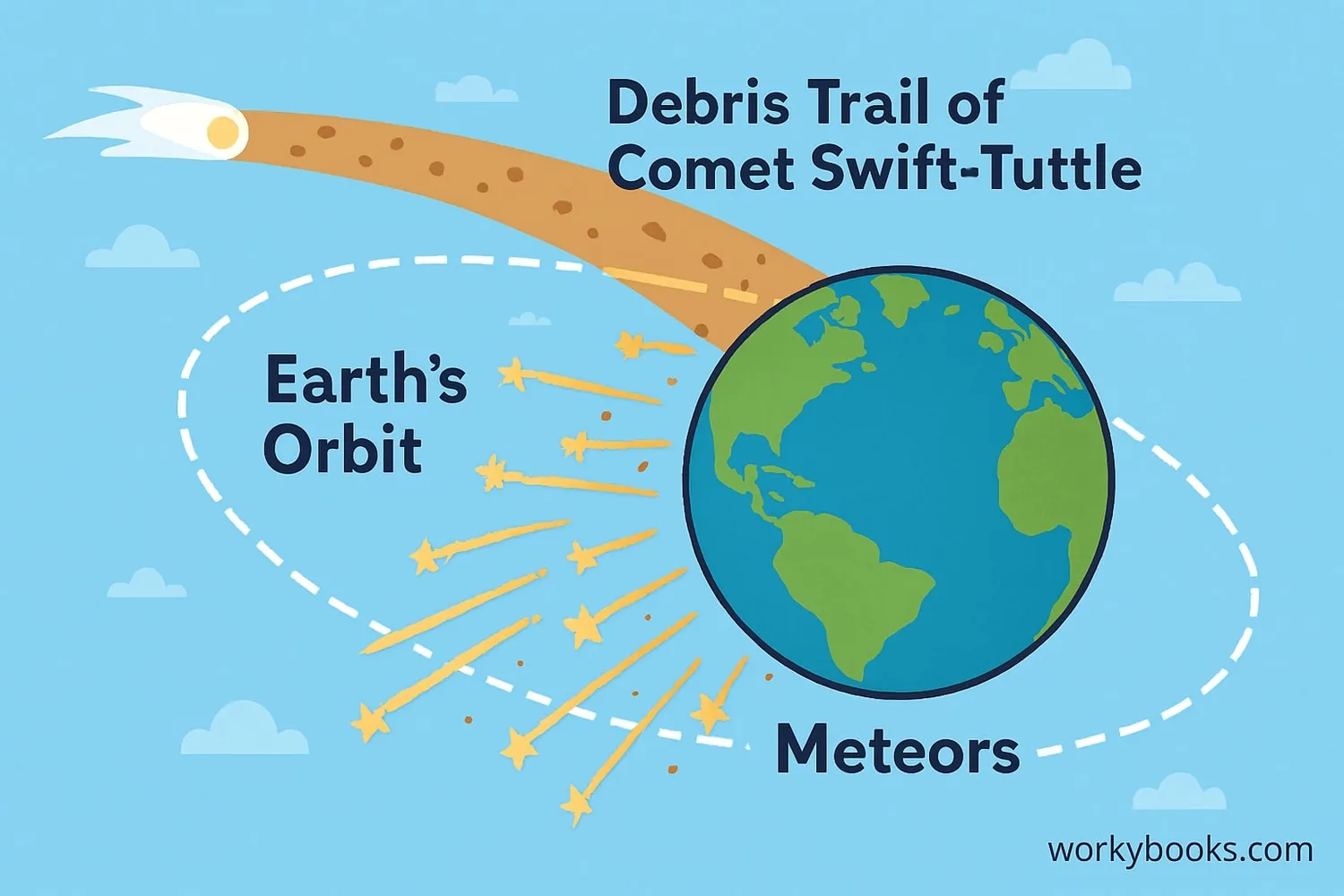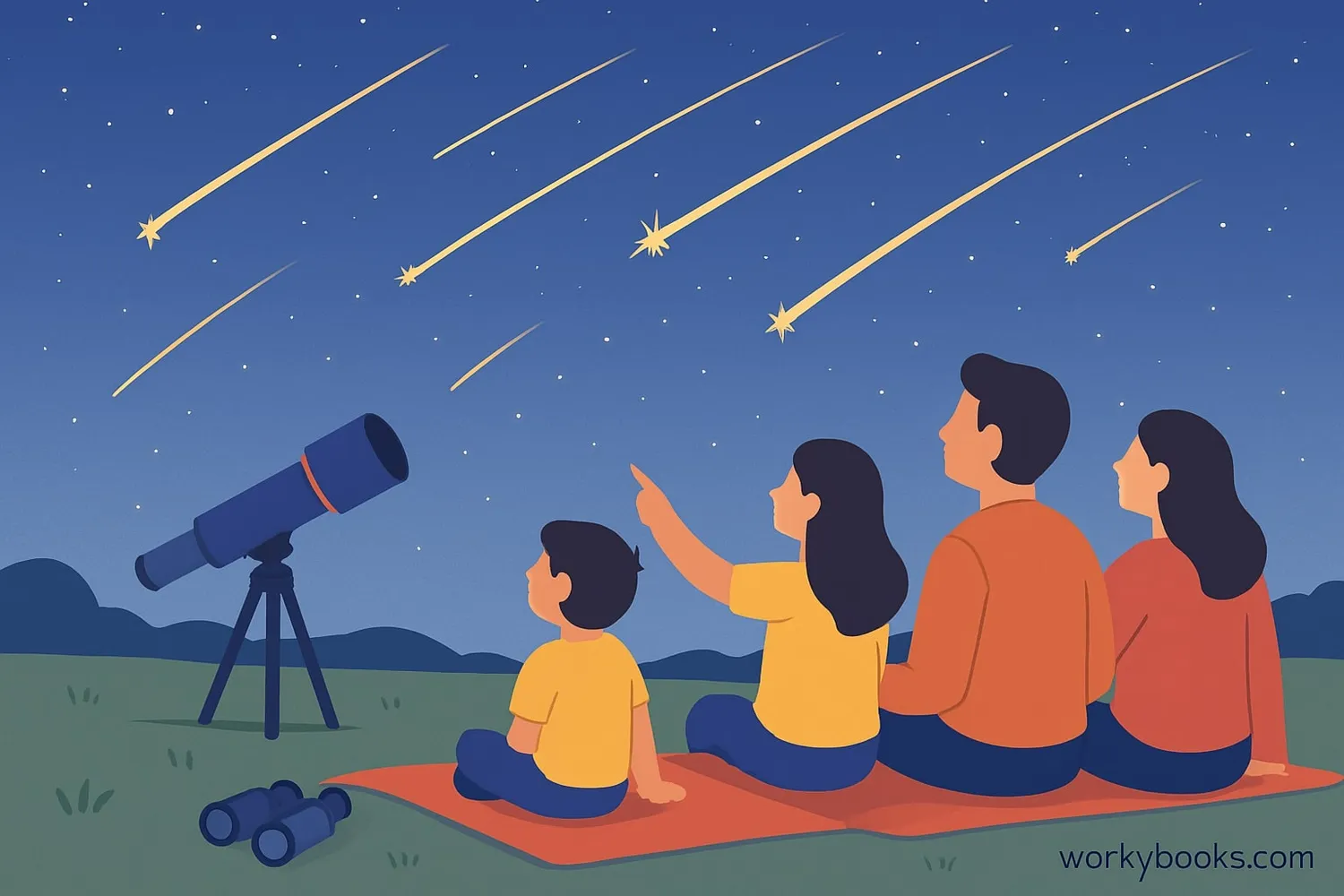The Perseid Meteor Shower - Definition, Examples, Quiz, FAQ, Trivia
Discover the amazing annual light show in our night sky!
What is the Perseid Meteor Shower?

The Perseid meteor shower is one of the most spectacular annual sky events! Every year in August, Earth passes through a trail of debris left behind by Comet Swift-Tuttle. As these tiny particles of ice and rock enter Earth's atmosphere, they burn up, creating bright streaks of light across the sky that we call "shooting stars."
The Perseids get their name from the constellation Perseus because the meteors appear to come from that direction in the sky. This amazing natural light show has been observed for over 2,000 years!
Key Fact
The Perseids are known for producing up to 100 meteors per hour at their peak, making them one of the most active meteor showers!
How Meteor Showers Happen

Meteor showers happen when Earth passes through the debris trail left behind by a comet as it orbits the Sun. Here's the step-by-step process:
Comet Path
Comet Swift-Tuttle orbits the Sun, leaving behind a trail of debris
Earth's Orbit
Earth crosses this debris trail every August
Debris Entry
Tiny particles enter Earth's atmosphere at high speed
Heating Up
Friction with the atmosphere heats the particles
Meteor Streak
Particles burn up, creating bright streaks of light
The particles that create meteors are usually no larger than a grain of sand! When they enter Earth's atmosphere at speeds of up to 130,000 miles per hour, they compress the air in front of them, heating both the air and the particle until it vaporizes in a bright flash.
Comet Swift-Tuttle
Comet Swift-Tuttle is 16 miles wide and takes 133 years to orbit the Sun. It last passed close to Earth in 1992 and will return in 2126.
When to Watch the Perseids
The Perseid meteor shower occurs every year between mid-July and late August, with the peak activity happening around August 12-13. Here's what you need to know about timing:
Peak Dates
August 12-13 are typically the best nights
Best Time
Pre-dawn hours (2:00 AM to sunrise)
Moon Phase
Check for moonlight that can wash out meteors
The Perseids are visible from the Northern Hemisphere and can sometimes be seen as far south as 30 degrees latitude in the Southern Hemisphere. The shower builds gradually in July, reaches its peak around August 12-13, and then slowly declines until late August.
Viewing Tip
Give your eyes at least 20 minutes to adjust to the darkness for best meteor spotting!
How to Watch the Perseids

You don't need special equipment to enjoy the Perseid meteor shower! Follow these simple tips for the best viewing experience:
Location
Find the darkest possible location away from city lights
Comfort
Bring a reclining chair or blanket to lie back comfortably
Patience
Allow at least 30 minutes for your eyes to adjust to darkness
To find the radiant point (where meteors appear to come from), look toward the northeast sky after midnight. The constellation Perseus will be rising, but you don't need to look directly at it - meteors will appear all across the sky!
Remember to dress warmly even in summer, as nights can get cool. Bring snacks and drinks, and enjoy the celestial show with friends or family!
Perseid Meteor Shower Quiz
Test your knowledge with this quiz about the Perseid meteor shower!
Frequently Asked Questions
Here are answers to common questions about the Perseid meteor shower:
Meteor Shower Trivia
Discover fascinating facts about meteor showers and the Perseids:
Historical Sightings
The earliest record of the Perseid meteor shower comes from Chinese astronomers in 36 AD, making it one of the oldest recorded astronomical events.
Speed Demons
Perseid meteors are some of the fastest, entering Earth's atmosphere at 133,200 mph (59 km/s) - that's 100 times faster than a jet airplane!
Fireball Show
The Perseids are known for producing more fireballs (exceptionally bright meteors) than any other annual meteor shower.
Constellation Connection
The shower gets its name from the constellation Perseus because the meteors appear to radiate from a point near this constellation.


